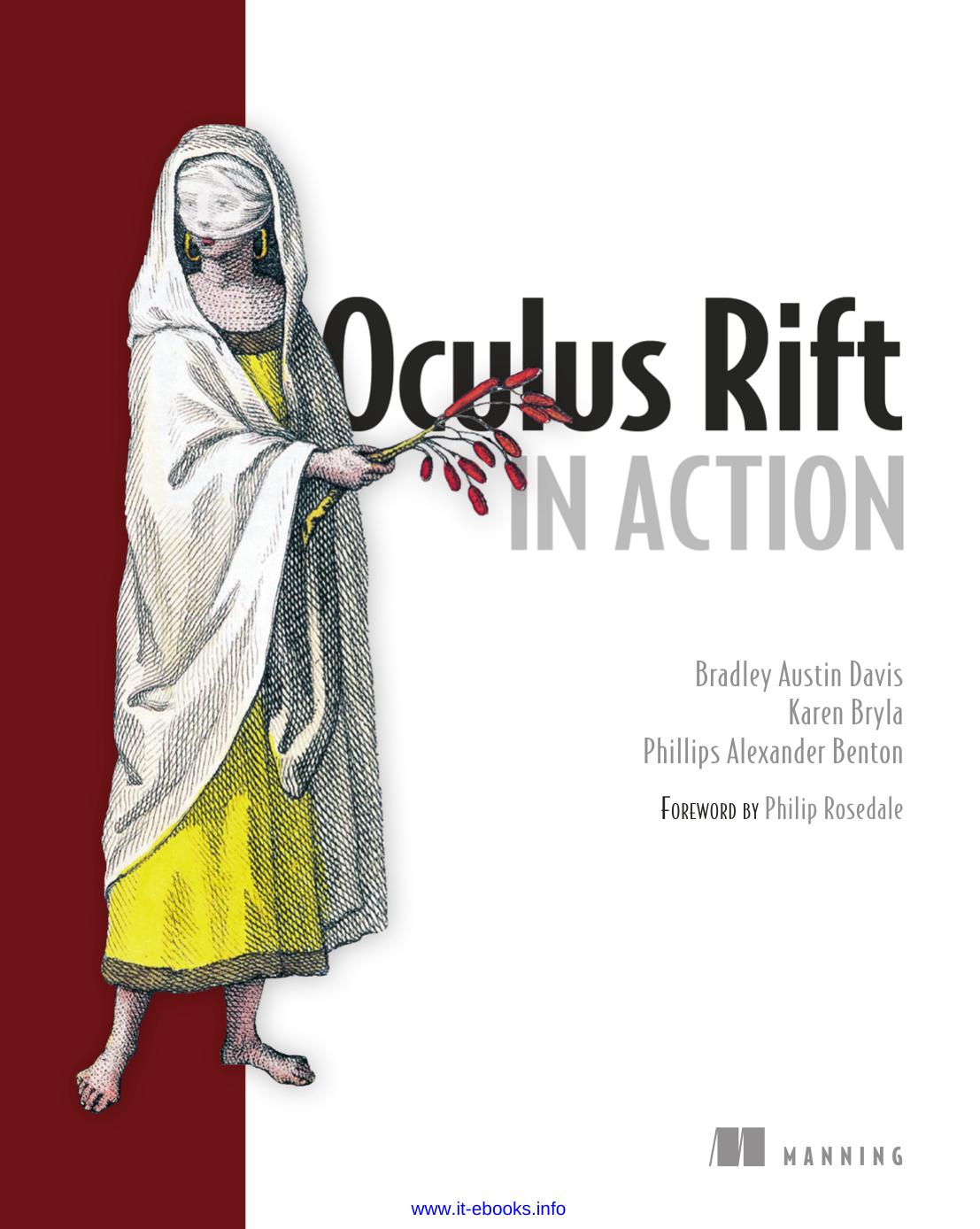Oculus Rift in Action by Bradley Austin Davis Karen Bryla Phillips Alexander Benton

Author:Bradley Austin Davis, Karen Bryla, Phillips Alexander Benton
Language: eng
Format: mobi, epub, pdf
Publisher: Manning Publications
Published: 2015-08-20T20:29:19.810000+00:00
Positioning these game items would be much more difficult for the player if objects’ motions were not constrained to sliding in a plane.
Only interact with what you can see
Studies such as those by Poupyrev and colleagues[5] and by Ware and Lowther[6] have demonstrated conclusively that users find selection with a 2D pointer or control more effective than 3D selection. There’s also ample evidence that motion within a 2D plane is easier to control than arbitrary 3D motion. This is corroborated by research showing that using a mouse on a flat surface allows greater precision than using a mouse in the air.
5
Poupyrev, I., S. Weghorst, M. Billinghurst, and T. Ichikawa. (1998). “Egocentric Object Manipulation in Virtual Environments: Empirical Evaluation of Interaction Techniques,” Computer Graphics Forum, 17(3): 41-–52.
6
Ware, C. and K. Lowther. (1997). “Selection Using a One-Eyed Cursor in a Fish Tank VR Environment,” ACM Transactions on Computer-Human Interactions, 4(4): 309–322.
There’s a strong intuitive sense to these results. If we accept the premise that users are less adept at selecting and manipulating objects that lie behind something else in the scene (a reasonable assumption), then the set of manipulable objects in any scene becomes the set whose geometry is immediately visible to the user. This set maps to a 2D plane and is therefore easily accessible with a mouse. Note, though, that Poupyrev and colleagues did observe a clear loss of 2D accuracy as 3D distance increased.
Poupyrev and colleagues also note the long-understood UI design phenomenon that test subjects performed better when the experiment included visual feedback. Whenever your user interacts with anything, give that user some feedback. Users love feedback.
Stuerzlinger draws the conclusion that if the primary interface to manipulation in a virtual world is to be through 2D controls such as the mouse, then the user’s viewpoint becomes critically important and therefore ease of navigation is essential. Unfortunately, this conclusion is at odds with Rift-specific research showing that navigation should be avoided if possible (see chapter 10). An acceptable middle ground appears to be to try to design virtual scenes to reduce occlusion, thereby reducing the need for motion.
The strongest depth cues are perspective and occlusion
Stuerzlinger states that for manipulation of objects beyond arm’s length in a virtual space, perspective and occlusion are the strongest signals of depth to the brain. This conclusion is supported by the fact that 3D FPS video games such as Doom and Quake were so successful long before stereo 3D technologies were readily available for the home.
The best signals for perspective in a scene come from objects’ relationship to other objects. If an item in a virtual environment rests against another, larger object whose scale is intuitively known (such as the ground, a building, or a starship), then perspective cues will quickly kick in to inform the user’s understanding of the scene.
When one object occludes another, their relative scale helps us sense their relative distance; by the same token, failure to occlude can make such judgments quite difficult. In figure 9.14, stills from the 1982
Download
Oculus Rift in Action by Bradley Austin Davis Karen Bryla Phillips Alexander Benton.epub
Oculus Rift in Action by Bradley Austin Davis Karen Bryla Phillips Alexander Benton.pdf
This site does not store any files on its server. We only index and link to content provided by other sites. Please contact the content providers to delete copyright contents if any and email us, we'll remove relevant links or contents immediately.
Algorithms of the Intelligent Web by Haralambos Marmanis;Dmitry Babenko(16237)
Jquery UI in Action : Master the concepts Of Jquery UI: A Step By Step Approach by ANMOL GOYAL(9389)
Test-Driven Development with Java by Alan Mellor(7737)
Data Augmentation with Python by Duc Haba(7610)
Principles of Data Fabric by Sonia Mezzetta(7380)
Learn Blender Simulations the Right Way by Stephen Pearson(7296)
Microservices with Spring Boot 3 and Spring Cloud by Magnus Larsson(7139)
Hadoop in Practice by Alex Holmes(6589)
RPA Solution Architect's Handbook by Sachin Sahgal(6519)
The Infinite Retina by Robert Scoble Irena Cronin(6217)
Big Data Analysis with Python by Ivan Marin(5937)
Life 3.0: Being Human in the Age of Artificial Intelligence by Tegmark Max(5518)
Pretrain Vision and Large Language Models in Python by Emily Webber(4896)
Infrastructure as Code for Beginners by Russ McKendrick(4654)
Functional Programming in JavaScript by Mantyla Dan(4438)
WordPress Plugin Development Cookbook by Yannick Lefebvre(4386)
The Age of Surveillance Capitalism by Shoshana Zuboff(4250)
Embracing Microservices Design by Ovais Mehboob Ahmed Khan Nabil Siddiqui and Timothy Oleson(4149)
Applied Machine Learning for Healthcare and Life Sciences Using AWS by Ujjwal Ratan(4136)
